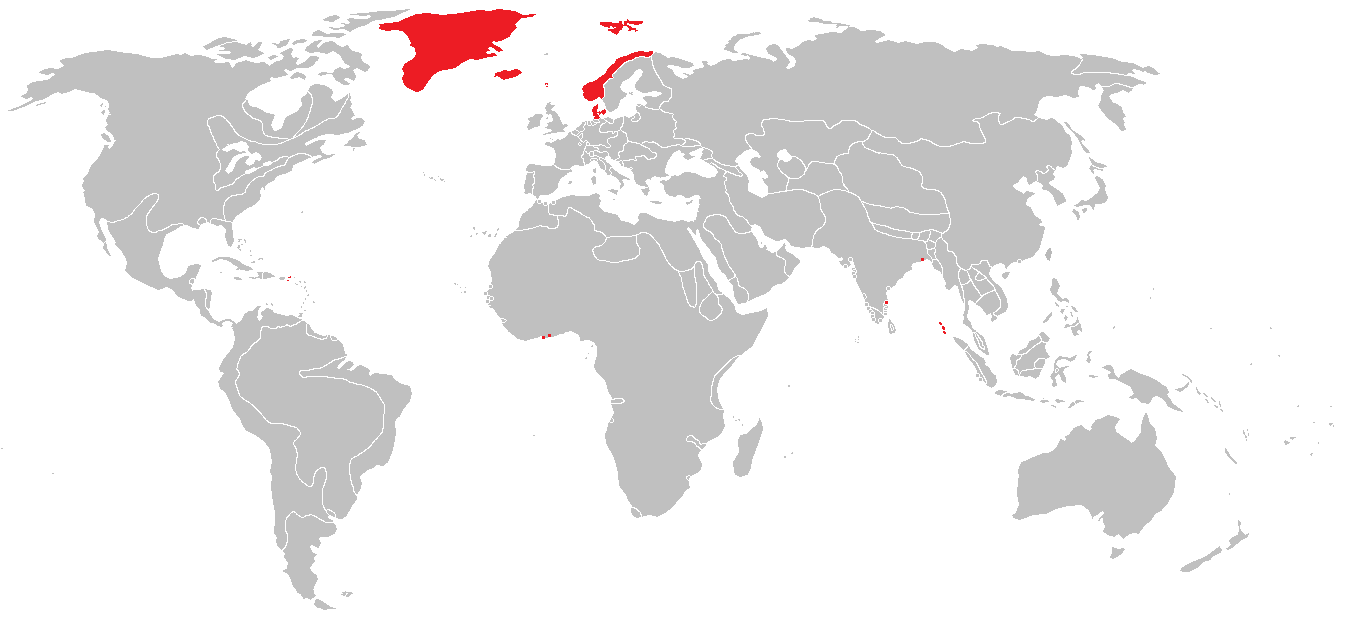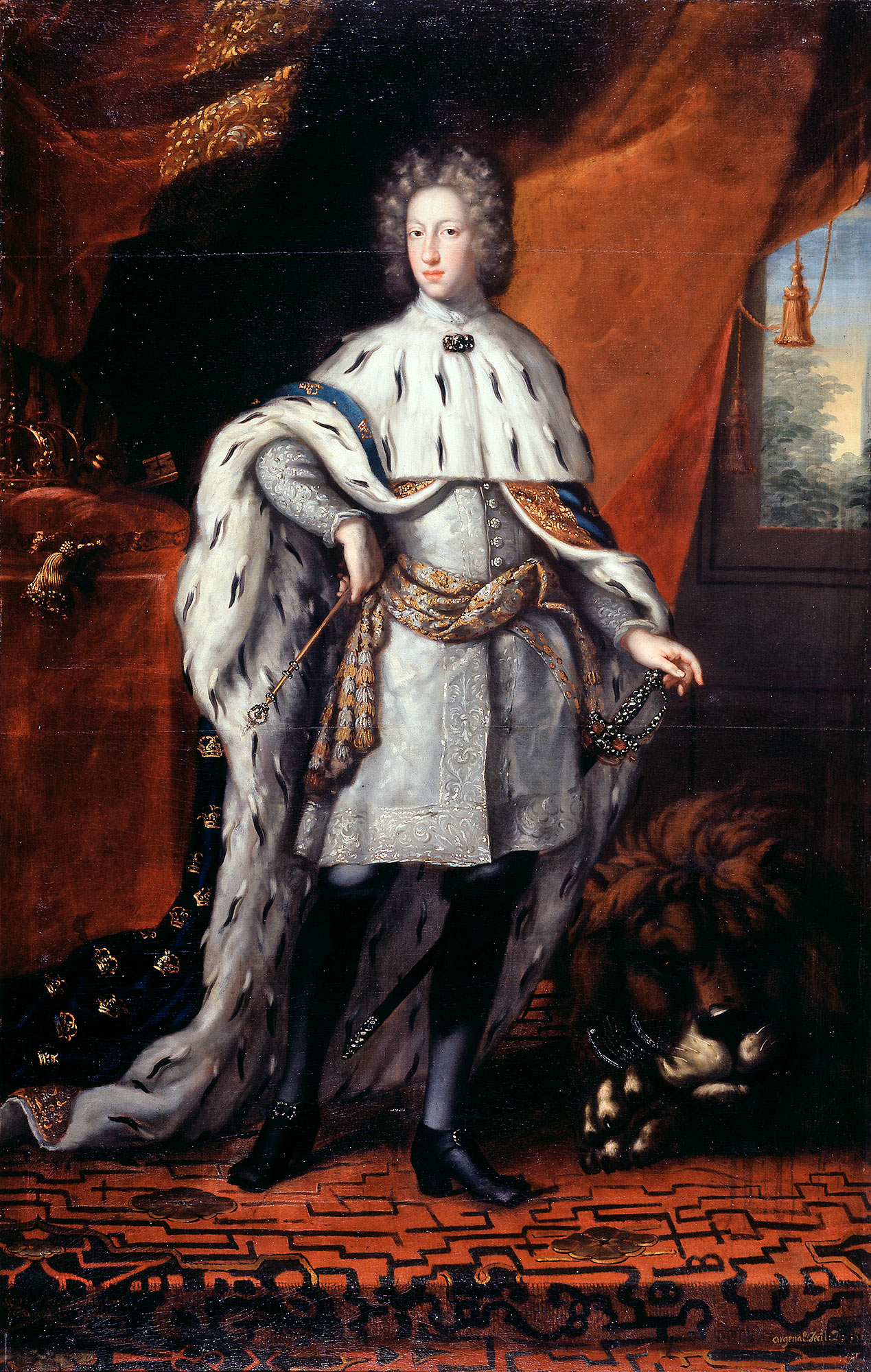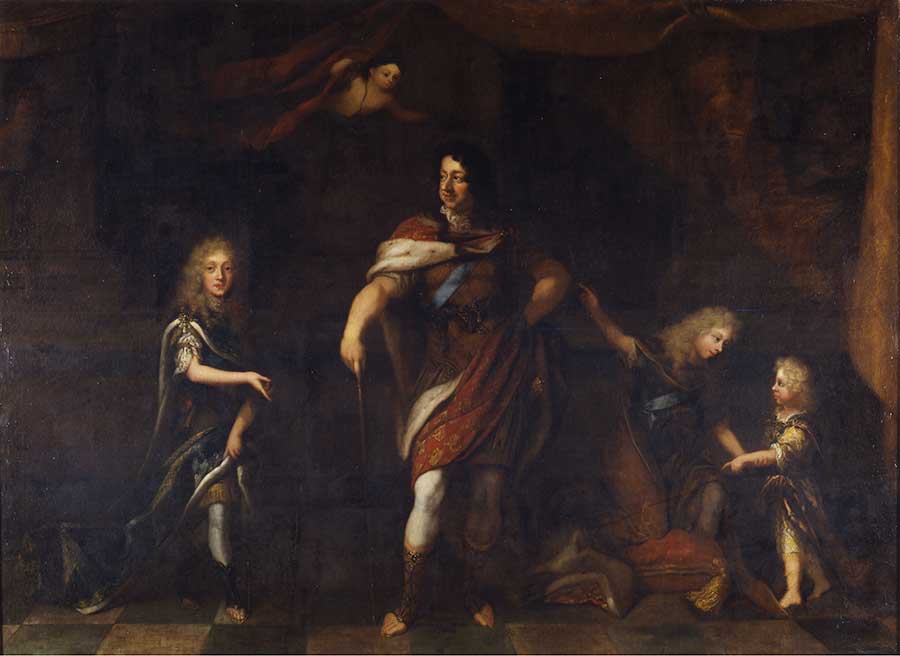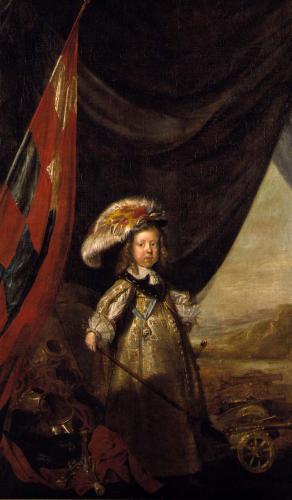|
Peace Of Travendal
The Peace of Travendal was a peace treaty concluded at the outset of the Great Northern War on 18 August 1700 between the Swedish Empire, Denmark–Norway and Holstein-Gottorp in Traventhal.Weigley (2004), p.108 Denmark had to return Holstein-Gottorp to its duke, a Swedish ally, and to leave the anti-Swedish alliance. The Danes only reentered the war after Sweden's major defeat in the Battle of Poltava, 1709, having used the time to reform their army. The treaty was guaranteed by France, the Holy Roman Empire, the United Provinces (Netherlands) and Great Britain. Background In 1698 and 1699, Peter the Great of Russia, Augustus II the Strong of Saxony and Poland–Lithuania, as well as Christian V and his successor Frederick IV of Denmark-Norway agreed on a three-front assault on the Swedish Empire,Frost (2000), p.228 where minor Charles XII had ascended the throne in 1697.Frost (2000), p.227 Holstein-Gottorp, just south of Denmark, was tied to Sweden by the marriage of duke F ... [...More Info...] [...Related Items...] OR: [Wikipedia] [Google] [Baidu] |
Traventhal House
Traventhal House (german: Schloss Traventhal) in the municipality of Traventhal near Bad Segeberg in the southern part of the German state of Schleswig-Holstein was the summer residence of the dukes of Schleswig-Holstein-Sonderburg-Plön. In the 18th century the house was renowned for its Baroque garden, which was the largest and most significant of its kind in the duchies.Dehio: ''Handbuch der Deutschen Kunstdenkmäler. Hamburg, Schleswig-Holstein'', p. 870. On the dissolution of the Duchy of Plön in 1761 the brief heyday of the stately home came to an end. The original house was demolished at the end of the 19th century and replaced by a new building typical of the time in the historicist style. [Baidu] |
Denmark–Norway
Denmark–Norway (Danish and Norwegian: ) was an early modern multi-national and multi-lingual real unionFeldbæk 1998:11 consisting of the Kingdom of Denmark, the Kingdom of Norway (including the then Norwegian overseas possessions: the Faroe Islands, Iceland, Greenland, and other possessions), the Duchy of Schleswig, and the Duchy of Holstein.Feldbæk 1998:21f, 125, 159ff, 281ff The state also claimed sovereignty over three historical peoples: Frisians, Gutes and Wends.Feldbæk 1998:21 Denmark–Norway had several colonies, namely the Danish Gold Coast, the Nicobar Islands, Serampore, Tharangambadi, and the Danish West Indies.Feldbæk 1998:23 The union was also known as the Dano-Norwegian Realm (''Det dansk-norske rige''), Twin Realms (''Tvillingerigerne'') or the Oldenburg Monarchy (''Oldenburg-monarkiet'') The state's inhabitants were mainly Danes, Norwegians and Germans, and also included Faroese, Icelanders and Inuit in the Norwegian overseas possessions, a Sami minori ... [...More Info...] [...Related Items...] OR: [Wikipedia] [Google] [Baidu] |
Siege Of Tönning
During the Great Northern War, the fortress of Tönning (Tønning) in the territory of Holstein-Gottorp, an ally of the Swedish Empire, was besieged twice. Denmark-Norway was forced to lift the first siege in 1700, but a combined force of the anti-Swedish coalition successfully besieged and took Tönning in 1713–1714. 1700 The first siege was one of the first military actions of the Great Northern War. Denmark-Norway, Saxe- Poland-Lithuania and Russia had agreed on invading the Swedish Empire on three fronts, and accordingly, Danish forces moved into Holstein-Gottorp,Frost (2000), p.228 allied and dynastically tied to Sweden,Frost (2000), p.227 and laid siege to Tönning in March 1700. The siege had to be lifted when Charles XII of Sweden, backed by the Maritime Powers, in a surprise move deployed an army in front of Copenhagen, forcing Frederik IV of Denmark-Norway out of the war by the Peace of Travendal on 18 August 1700.Frost (2000), p.229 Denmark re-entered the war onl ... [...More Info...] [...Related Items...] OR: [Wikipedia] [Google] [Baidu] |
Charles XI Of Sweden
Charles XI or Carl ( sv, Karl XI; ) was King of Sweden from 1660 until his death, in a period of Swedish history known as the Swedish Empire (1611–1721). He was the only son of King Charles X Gustav of Sweden and Hedwig Eleonora of Holstein-Gottorp. His father died when he was four years old, so Charles was educated by his governors until his coronation at the age of seventeen. Soon afterward, he was forced out on military expeditions to secure the recently acquired dominions from Danish troops in the Scanian War. Having successfully fought off the Danes, he returned to Stockholm and engaged in correcting the country's neglected political, financial, and economic situation. He managed to sustain peace during the remaining 20 years of his reign. Changes in finance, commerce, national maritime and land armaments, judicial procedure, church government, and education emerged during this period. Charles XI was succeeded by his only son Charles XII, who made use of the well-tra ... [...More Info...] [...Related Items...] OR: [Wikipedia] [Google] [Baidu] |
Hedvig Sophia Of Sweden
Hedvig Sophia Augusta of Sweden (26 June 1681 – 22 December 1708), Duchess of Holstein-Gottorp, was the eldest child of Charles XI of Sweden and Ulrike Eleonore of Denmark. She was heir presumptive to the Swedish throne until her death and the regent of the duchy of Holstein-Gottorp for her minor son from 1702 to 1708. Some sources refer to her as Sofia. Youth Hedvig Sophia spent the majority of her upbringing at Karlberg Palace. After the death of her mother in 1693, she and her siblings were placed under the custody of her grandmother Hedvig Eleonora of Holstein-Gottorp. Her personal caretaker was Juliana Schierberg, who was to be her lifelong and influential confidante. Hedvig Sophia was, and continued to be, the favorite of her grandmother. Due to her grandmother's influence, she came to harbor anti-Danish views. She was described as beautiful, passionate but dignified, and as a good student, particularly in painting.Nanna Lundh-Eriksson (1947). Hedvig Eleonora. Stockholm ... [...More Info...] [...Related Items...] OR: [Wikipedia] [Google] [Baidu] |
Frederick IV, Duke Of Holstein-Gottorp
Frederick IV (18 October 1671 – 19 July 1702) was the reigning Duke of Holstein-Gottorp. He was born in Gottorf Castle as the elder son of Duke Christian Albert of Holstein-Gottorp and Princess Frederica Amalia of Denmark. He was married on 12 May 1698 to Princess Hedwig Sophia of Sweden and they had an only child, Charles Frederick, who eventually fathered the future Tsar Peter III of Russia, therefore making Frederick a patrilineal ancestor to all Russian emperors after Catherine II. He took part in the Great Northern War and was killed by artillery fire in the Battle of Kliszów in Poland. According to Robert Massie's ''Peter the Great: His Life and World'', Duke Frederick arrived in Stockholm to marry his cousin, Princess Hedwig Sophia, soon befriending his first cousin and new brother-in-law, King Charles XII (their respective mothers, Frederica Amalia and Ulrika Eleonora, being daughters of Frederick III of Denmark). His visit made such an impression on Swedish ... [...More Info...] [...Related Items...] OR: [Wikipedia] [Google] [Baidu] |
Denmark
) , song = ( en, "King Christian stood by the lofty mast") , song_type = National and royal anthem , image_map = EU-Denmark.svg , map_caption = , subdivision_type = Sovereign state , subdivision_name = Danish Realm, Kingdom of Denmark , established_title = History of Denmark#Middle ages, Consolidation , established_date = 8th century , established_title2 = Christianization , established_date2 = 965 , established_title3 = , established_date3 = 5 June 1849 , established_title4 = Faroese home rule , established_date4 = 24 March 1948 , established_title5 = European Economic Community, EEC 1973 enlargement of the European Communities, accession , established_date5 = 1 January 1973 , established_title6 = Greenlandic home rule , established_date6 = 1 May 1979 , official_languages = Danish language, Danish , languages_type = Regional languages , languages_sub = yes , languages = German language, GermanGerman is recognised as a protected minority language in t ... [...More Info...] [...Related Items...] OR: [Wikipedia] [Google] [Baidu] |
Charles XII Of Sweden
Charles XII, sometimes Carl XII ( sv, Karl XII) or Carolus Rex (17 June 1682 – 30 November 1718 O.S.), was King of Sweden (including current Finland) from 1697 to 1718. He belonged to the House of Palatinate-Zweibrücken, a branch line of the House of Wittelsbach. Charles was the only surviving son of Charles XI and Ulrika Eleonora the Elder. He assumed power, after a seven-month caretaker government, at the age of fifteen. In 1700, a triple alliance of Denmark–Norway, Saxony– Poland–Lithuania and Russia launched a threefold attack on the Swedish protectorate of Holstein-Gottorp and provinces of Livonia and Ingria, aiming to draw advantage as the Swedish Empire was unaligned and ruled by a young and inexperienced king, thus initiating the Great Northern War. Leading the Swedish army against the alliance, Charles won multiple victories despite being usually significantly outnumbered. A major victory over a Russian army some three times the size in 1700, at the Ba ... [...More Info...] [...Related Items...] OR: [Wikipedia] [Google] [Baidu] |
Frederick IV Of Denmark
Frederick IV (Danish: ''Frederik''; 11 October 1671 – 12 October 1730) was King of Denmark and Norway from 1699 until his death. Frederick was the son of Christian V of Denmark-Norway and his wife Charlotte Amalie of Hesse-Kassel. Early life Frederick was born on 11 October 1671 at Copenhagen Castle as the eldest son of King Christian V and his spouse Charlotte Amalie of Hesse-Kassel. The newborn prince was baptized the same evening with the name Frederick by the royal confessional Hans Leth. His grandfather King Frederick III had died a year and a half before he was born, and as the eldest son of the ruling king he was thus crown prince from birth. At the age of 18, he was given a seat on the Council of State as the heir apparent to the throne. As crown prince, Frederick broadened his education by travelling in Europe, led by his chamberlain Ditlev Wibe. He was particularly impressed by the architecture in Italy and, on his return to Denmark, asked his father, Christia ... [...More Info...] [...Related Items...] OR: [Wikipedia] [Google] [Baidu] |
Christian V Of Denmark
Christian V (15 April 1646 25 August 1699) was king of Denmark and Norway from 1670 until his death in 1699. Well-regarded by the common people, he was the first king anointed at Frederiksborg Castle chapel as absolute monarch since the decree that institutionalized the supremacy of the king in Denmark-Norway. Christian fortified the absolutist system against the aristocracy by accelerating his father's practice of allowing both Holstein nobles and Danish and Norwegian commoners into state service. As king, he wanted to show his power as absolute monarch through architecture, and dreamed of a Danish Versailles. He was the first to use the 1671 Throne Chair of Denmark, partly made for this purpose. His motto was: ''Pietate et Justitia'' (With piety and justice). Biography Early years Prince Christian was born on 15 April 1646 at Duborg Castle in the city of Flensburg, then located in the Duchy of Schleswig. He was the first legitimate child born to the then Prince Frede ... [...More Info...] [...Related Items...] OR: [Wikipedia] [Google] [Baidu] |
Polish–Lithuanian Commonwealth
The Polish–Lithuanian Commonwealth, formally known as the Kingdom of Poland and the Grand Duchy of Lithuania, and, after 1791, as the Commonwealth of Poland, was a bi-confederal state, sometimes called a federation, of Crown of the Kingdom of Poland, Poland and Grand Duchy of Lithuania, Lithuania ruled by a common Monarchy, monarch in real union, who was both King of Poland and List of Lithuanian monarchs, Grand Duke of Lithuania. It was one of the largest and most populous countries of 16th- to 17th-century Europe. At its largest territorial extent, in the early 17th century, the Commonwealth covered almost and as of 1618 sustained a multi-ethnic population of almost 12 million. Polish language, Polish and Latin were the two co-official languages. The Commonwealth was established by the Union of Lublin in July 1569, but the Crown of the Kingdom of Poland and the Grand Duchy of Lithuania had been in a ''de facto'' personal union since 1386 with the marriage of the Polish ... [...More Info...] [...Related Items...] OR: [Wikipedia] [Google] [Baidu] |
Electorate Of Saxony
The Electorate of Saxony, also known as Electoral Saxony (German: or ), was a territory of the Holy Roman Empire from 1356–1806. It was centered around the cities of Dresden, Leipzig and Chemnitz. In the Golden Bull of 1356, Emperor Charles IV designated the Duchy of Saxe-Wittenberg an electorate, a territory whose ruler was one of the prince-electors who chose the Holy Roman emperor. After the extinction of the male Saxe-Wittenberg line of the House of Ascania in 1422, the duchy and the electorate passed to the House of Wettin. The electoral privilege was tied only to the Electoral Circle, specifically the territory of the former Duchy of Saxe-Wittenberg. In the 1485 Treaty of Leipzig, the Wettin noble house was divided between the sons of Elector Frederick II into the Ernestine and Albertine lines, with the electoral district going to the Ernestines. In 1547, when the Ernestine elector John Frederick I was defeated in the Schmalkaldic War, the electoral district and el ... [...More Info...] [...Related Items...] OR: [Wikipedia] [Google] [Baidu] |

_en2.png)



